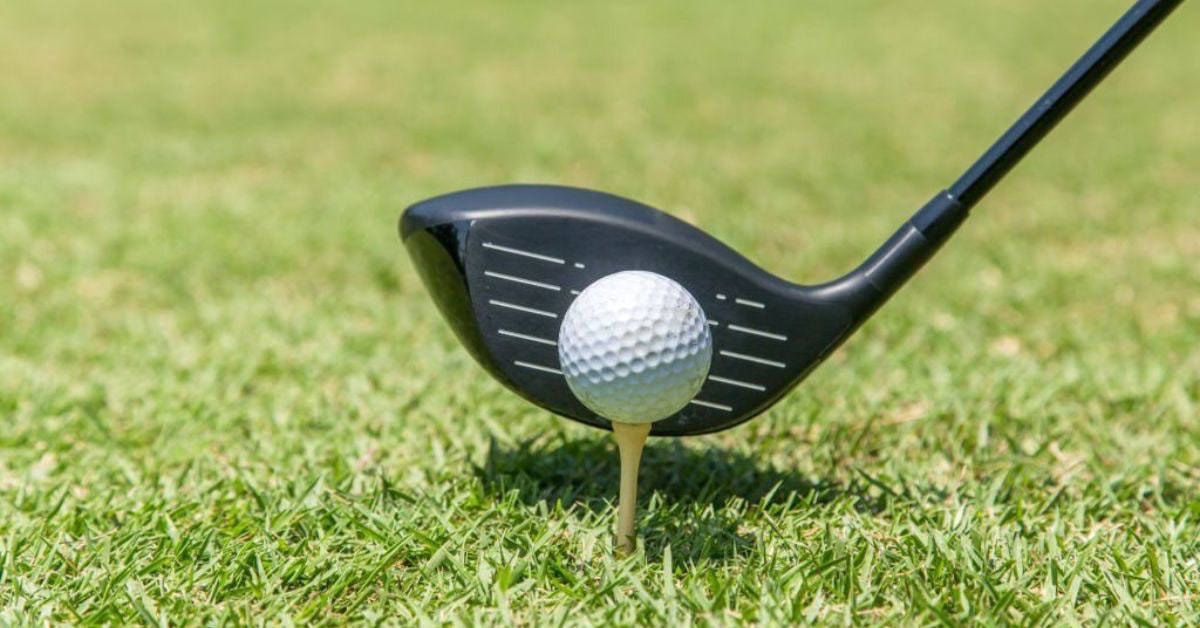Despite being the lowest lofted club in the bag, the driver can generate lots of spin as the clubface cuts across the ball with lots of club head speed.
Usually, driver spin is unwanted. Excessive backspin or sidespin can hamper distance off the tee, and increase the likelihood of severe hooks and slices.
In this article, you’ll learn how to reduce driver spin, helping you hit punchy and penetrative tee shots to unlock distance gains and improved accuracy.
How to Reduce Driver Spin
To reduce driver spin, hit up against the ball with an ascending attack angle. Also, strike the ball in the center of the clubface — the sweet spot. This will reduce spin rates, producing punchy tee shots with greater distance. Finally, low spin drivers can further help to reduce spin.
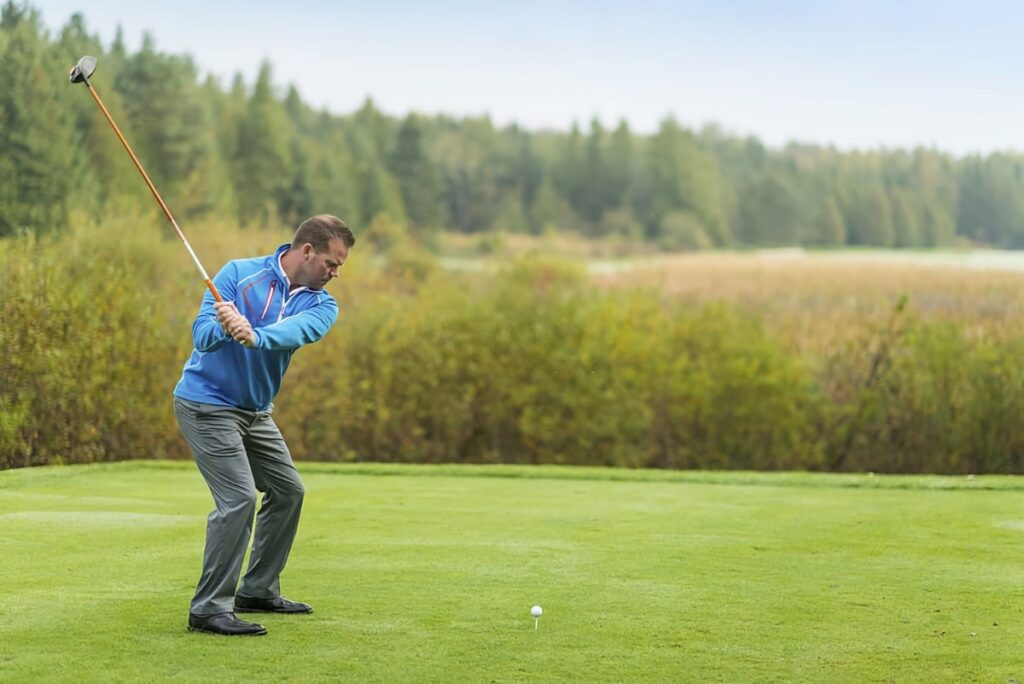
Here are 3 simple tips on how to reduce driver spin:
- Hit up against the ball — With an ascending angle of attack
- Find the center of the face — Reducing the backspin effect
- Switch to a low spin driver — Helps to reduce driver spin
Let’s dive into each of these in more detail.
Step 1: Hit Up Against the Ball
A common mistake when hitting the driver is having a downward angle of attack.
Essentially, hitting down on the golf ball applies lots of unwanted backspin. As a result, the ball balloons upwards when faced with the friction of air resistance. This causes the ball to travel high rather than long, falling steeply with very little distance.
Instead, you should aim to hit up against the ball. This will produce a lower spin shot that penetrates through the air for improved distance off the tee.
To do this, tee the ball slightly higher so that the ball’s equator is in line with the top edge of the driver’s face. Then, set up with the ball inside your front heel.
Also, keep your weight slightly more on your back foot. This will promote the feeling of hitting up on the ball, rather than chopping down on it at impact.
This will allow the swing path to bottom out before reaching the ball, so you can strike the ball with an ascending angle of attack for better launch and reduced spin.
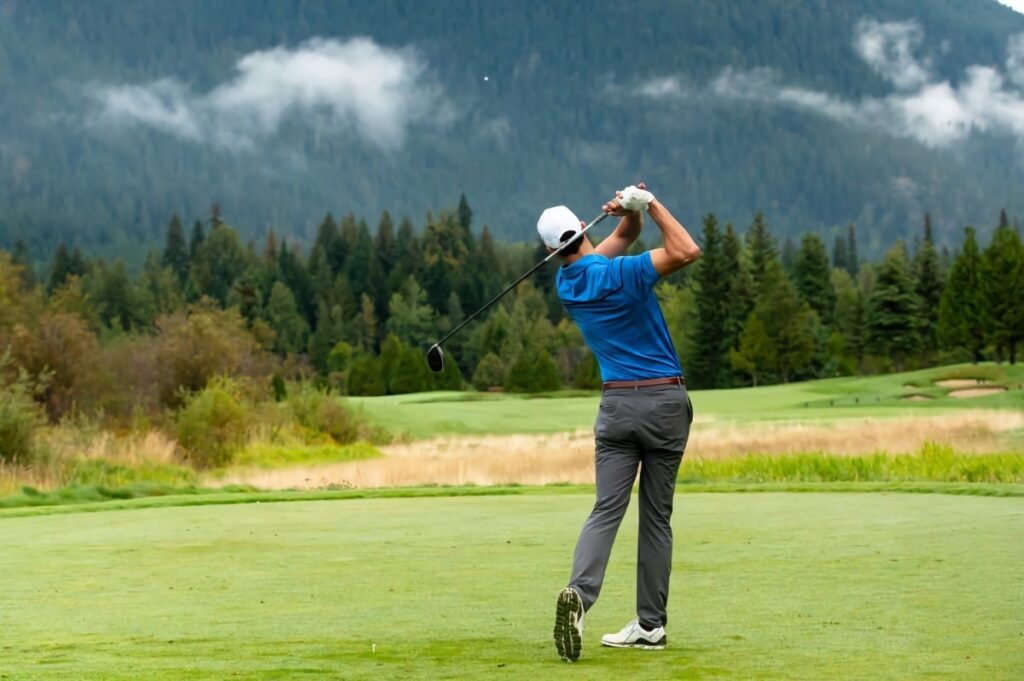
Step 2: Find the Center of the Face
Another common reason for excessive spin is hitting the driver low on the face.
When you strike the ball low on the face with the driver, the ball rolls up the face fractionally at impact. Once again, this applies unwanted backspin to the golf ball.
To solve this, try to hit the ball with the center of the driver face. By striking the sweet spot, you will apply minimal spin to the ball, producing a more penetrative ball flight.
This takes practice! A useful way to track your strike location is to apply Strike Spray to the clubface, allowing you to monitor your impact position after each tee shot.
Over time, you will begin to recognize the sensation of finding the sweet spot.
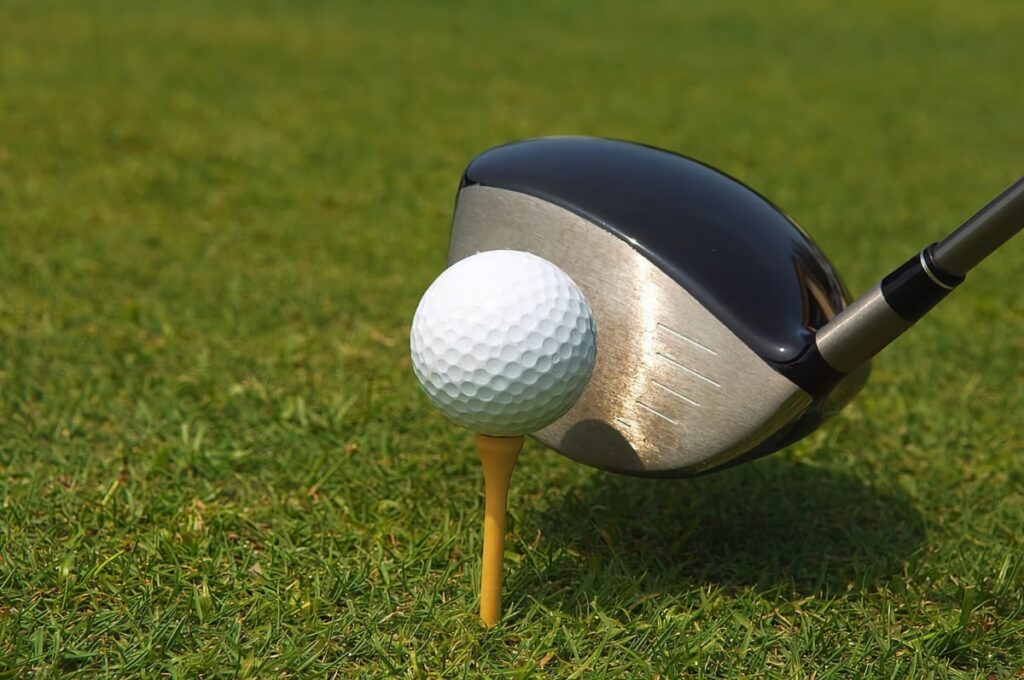
Step 3: Switch to a Low Spin Driver
Finally, you can consider swapping out your current driver for a low spin driver.
Many club manufacturers produce a low-spin version for each of their drivers. Typically, these are designed for players with higher swing speeds and ballooning ball flights.
Put simply, low spin drivers are designed with the weight pushed forward in the club head. This has the effect of reducing the MOI and dynamic loft for lower spin rates.
However, low spin drivers can only alter spin rates by a few hundred RPM. The best way to solve your spin problems is to focus on your angle of attack and impact position.
Check out the video below by Clay Ballard of Top Speed Golf, where he demonstrates and explains the causes and solutions of high-spin driver shots:
FAQs
Here are a couple of answers to common driver queries:
What Is the Ideal Spin Rate For a Driver?
The ideal spin rate for a driver is below 3000 RPM. This will produce more punchy, penetrative tee shots without the risk of the ball ballooning up in the air.
However, the ideal spin rate depends largely on the intent of the shot. For instance, if you’re looking to get the ball to land softly, you’ll want higher spin rates to enable the ball to fall more vertically out of the air with a minimal rollout.
But, for pure distance, low spin is always preferred. According to data from Trackman, the optimal RPM range for each swing speed category can be seen below:
| Swing Speed | Launch Angle (degrees) | Spin Rate (rpm) |
| Very Fast (>105 mph) | 10-16º | 1750-2300 |
| Fast (97-104 mph) | 12-16º | 2000-2500 |
| Average (84-96 mph) | 13-16º | 2400-2700 |
| Slow (72-83 mph) | 14-19º | 2600-2900 |
| Ladies (<70 mph) | 14-19º | 2600-2900 |
As you can see, faster swing speeds benefit from lower spin rates for optimal distance off the tee. Likewise, a lower launch angle helps generate more distance.
Conversely, slightly higher spin rates are preferred for slow swing speeds. Too little spin can cause the ball to prematurely drop out of the air, with minimal carry distance.
How to Increase Driver Spin
The simplest way to increase driver spin is to increase loft. To do this, swap out your current driver for one with more loft, helping you get more height on your tee shots.
While it’s more common for golfers to seek reduced spin rates off the tee, some golfers require more spin to help get the ball in the air with a higher launch and trajectory.
By increasing the loft, the launch angle will also be increased. This will produce a ball flight with a higher trajectory and peak height, and a greater total distance.
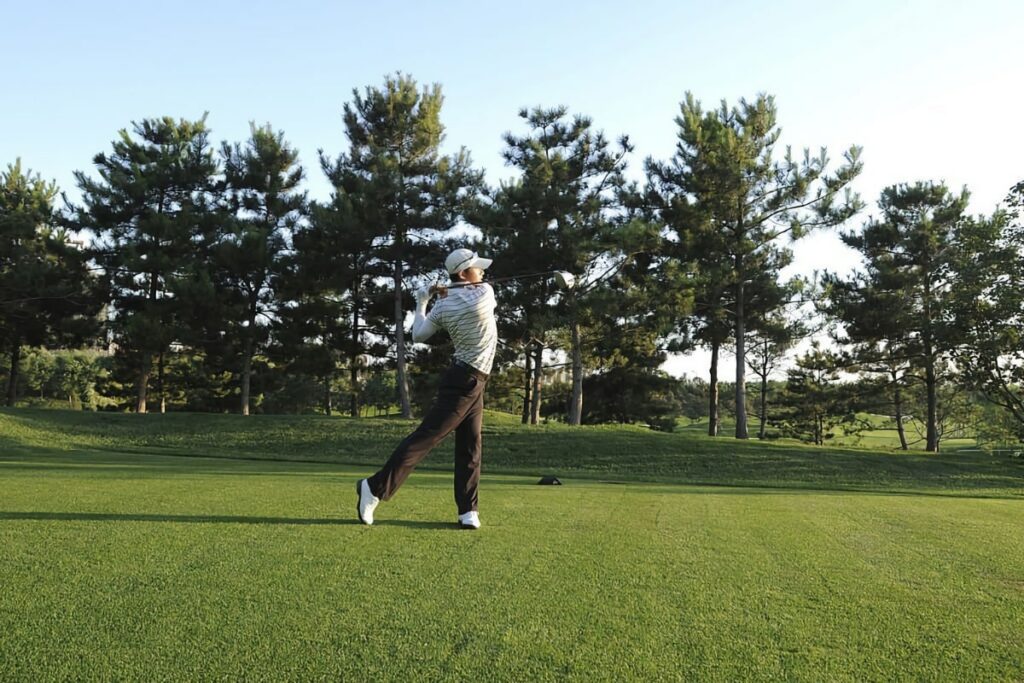
Conclusion
Ultimately, the most effective way to reduce driver spin is to hit up against the golf ball, while striking the ball with the center of the clubface.
It’s not about swing speed. Rather, it’s about making good contact with the ball at an ascending angle of attack, launching the ball with minimal spin.
Of course, you can test out specialist “low spin” drivers. These drivers use alternative weighting to help golfers who struggle with high-spin tee shots.
However, it’s better to focus on your technique. With the correct strike and angle of attack, you will be able to hit long and punchy tee shots, unlocking extra yards.

